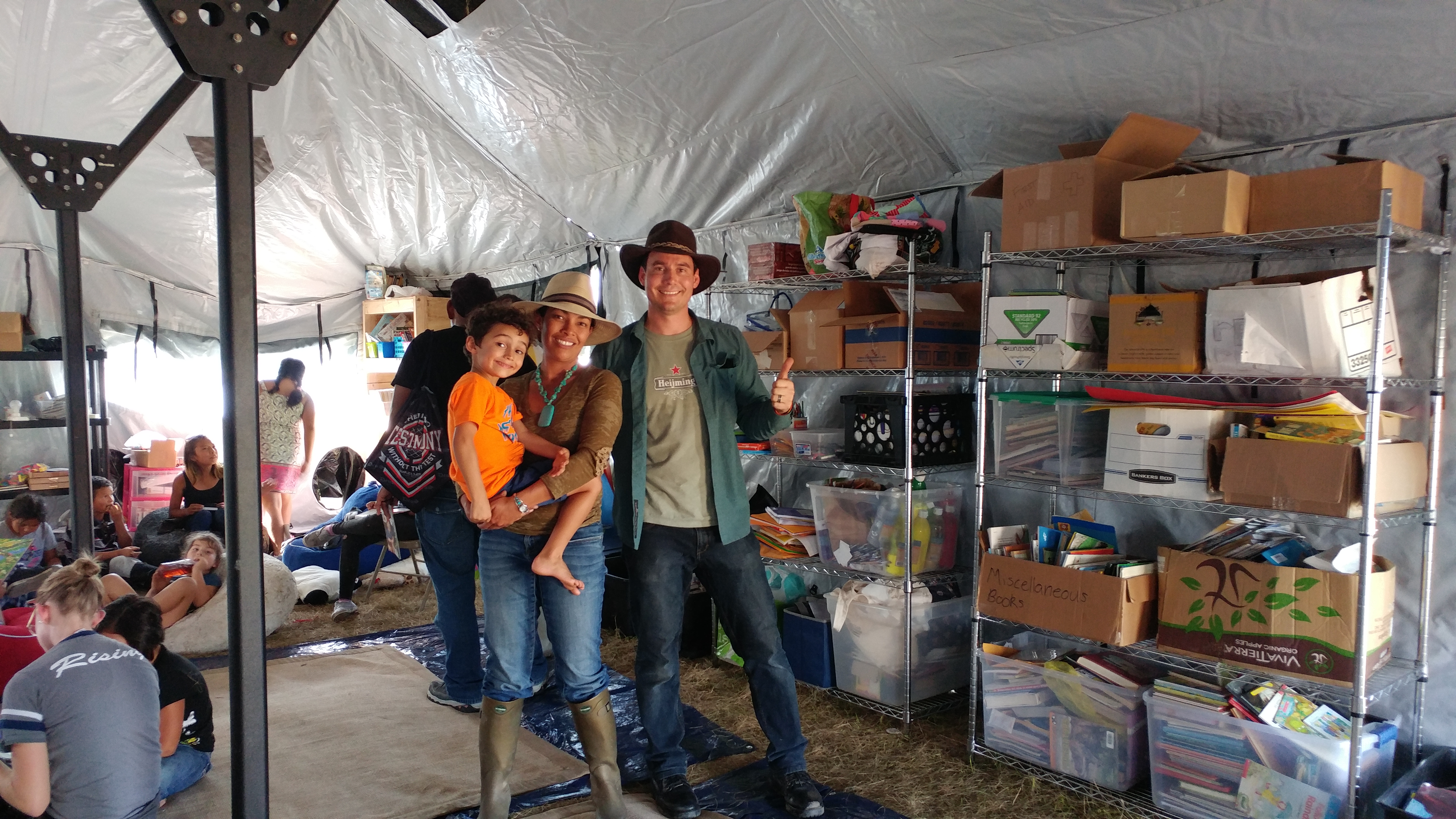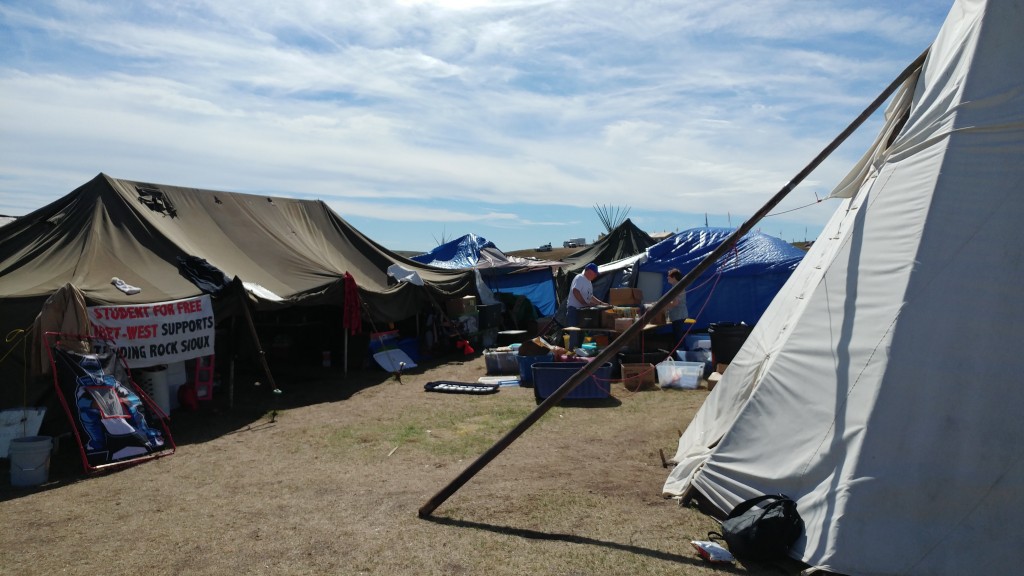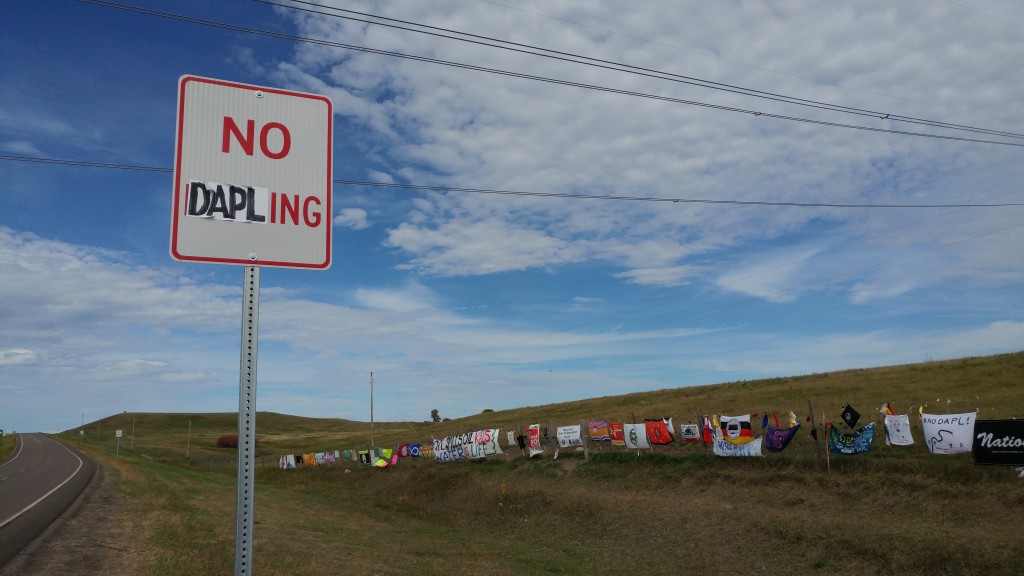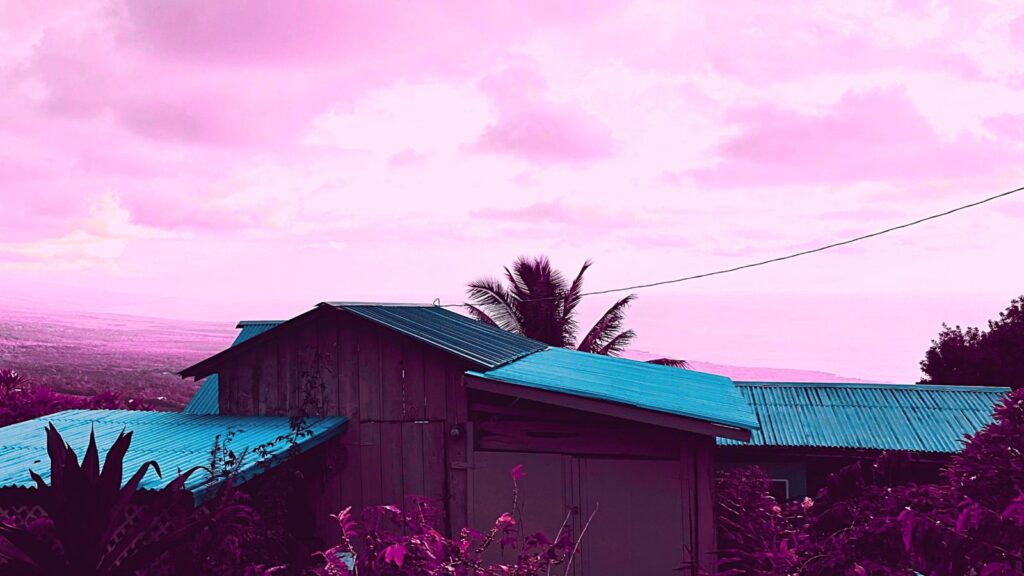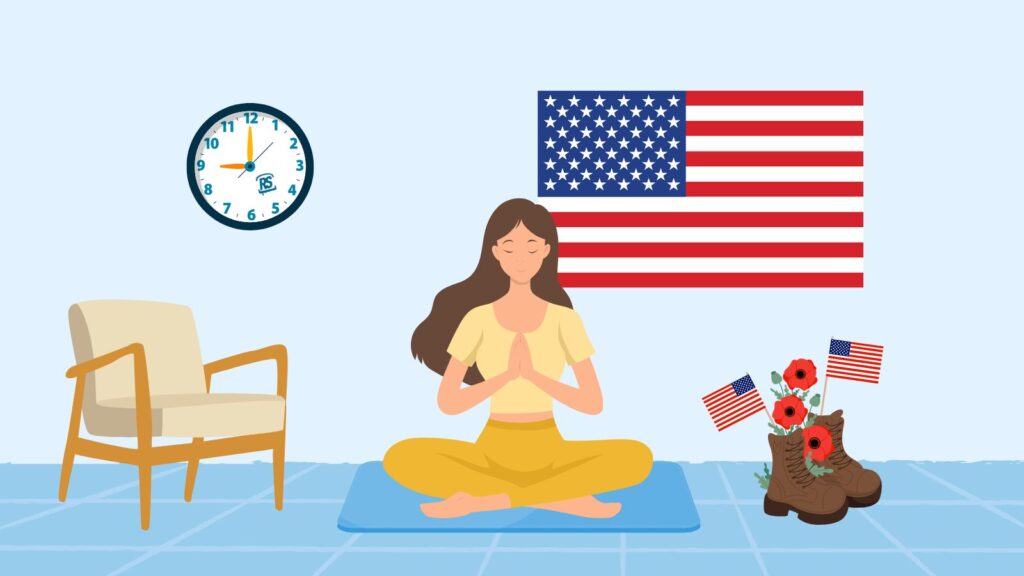“A guardian of souls,” one of Bianca Heyming’s friends calls her. Recently on her Facebook page, her husband Nick recalled the time Bianca noticed a thief grab a nearby diner’s computer. She gave chase down the stairs and organized the restaurant workers to surround the stammering criminal. She then returned to dinner and talking about setting up regional resiliency networks in collaboration with the indigenous youth she met at Standing Rock.
What is the mindful life? A big wisteria tree grows in Emerald Village, an intentional community, an eco-village Bianca and her colleagues created in Vista, California, north of San Diego. Bianca and her husband Nick are at the heart of a great experiment: how to live ethically in the 21st century. They worked with city hall to help low-income apartment residents. They brought in nonprofits for workshops on nutrition, gardening, and personal finance, helping locals start and join community gardens. Wherever she goes, Bianca raises awareness of the health giving properties of herbs and other plants. That wisteria tree whispers in her dreams.
Amid all the glaring headlines, a poignant moment occurred at Standing Rock, missed by many. A couple nights ago John Trudell’s band Bad Dog performed with Bonnie Raitt and Jackson Browne at a benefit for the water protectors at the nearby casino. When Quiltman started singing, you could see John’s band and his friend Jackson react to his absence as they performed John’s song without him. Do you know the story about how John’s wife Tina and their children died? I think of her as the first water protector, because she was fighting for the water when they set her house on fire. But now, 300 indigenous nations are there in Cannonball, North Dakota, protecting the water. Among them the Yaqui, Bianca’s tribe.
But Bianca has another tribe, too — she’s a Burner. Burners have been getting a bad reputation at Standing Rock because of some who treat it like just another festival. Burners who freeload, you know, tourists, or colonists. People who play guitar at campfire when they shouldn’t. People who explain when they should be listening. But they aren’t the only Burners at Standing Rock.
The governor of North Dakota is now threatening to clear out the camp to protect the protestors from winter. Wonder where he was when elders were freezing to death on the reservations for want of heat and adequate shelter. Oh, and I just heard four thousand veterans, unarmed, in uniform, are on the road headed for Standing Rock to join the non violent protest of the water protectors. In this quiet before the storm, it’s my privilege to share with you an in depth conversation with a wise woman: Bianca Heyming.
Tamra Lucid: Bianca please tell us about your heritage as an herbalist and a healer.
Bianca Heyming: My family history extends across the Southwest. My native ancestors are Yaqui. I’m from the Chavez-Garcia clan of southern New Mexico, which is located in the Las Cruces, Dona Ana, and Mesilla Valley area. My family has been there for many generations as land stewards, more or less a tradition hearkening back thousands of years through our Yaqui heritage. We continue to own lots of different farm lands and grow a number of vegetables and provide food for communities there. As Yaquis, we have a long history of irrigation, capturing of water and distributing it across otherwise desert landscapes.
The herbalist part of my family is also part of my upbringing. While living here in California, I pursued my Master’s degree in Chinese medicine. Prior to that I had been working in a corporate environment that left me unfulfilled. Coming out of college I started a multimedia production company and was making great money, but I knew I wasn’t living my purpose.
A girlfriend of mine suggested that I read the title of every book on my bookshelf to figure out what really matters to me. I read all those titles and it was a lot of healing and plant medicine books. So I decided to study Chinese medicine. In my younger years, coming out of college, I really wanted nothing to do with any type of agriculture, just because that’s what our family did back home. But when I was studying Chinese medicine I was having a really hard time learning the herbs. I talked with my father and he said, “Well, of course you can’t learn herbs reading it on a piece of paper in a book. Your family are plant people – you can only learn by growing them! So I volunteered at the Venice High School Learning Garden, taking care of the native American plants, the Ayurvedic Garden, and also the Chinese medicinal plants. That was when I really fell in love with land work. The part of myself that is tied so closely to my family finally awakened.
Since then I’ve spoken at different conferences on plant medicine. The practice that I encourage in people is building relationships with living, growing plants. We have a lot of people who will say, “I want to work with this plant medicine, it’s calling my name.” My response is, “Fantastic. Let’s see if you can grow it, be in service to it, before you harvest and process it.” There is a quote I heard not too long ago that says, “Asking for plant medicines to give you wisdom after they’ve been killed and processed is like asking your grandmother to give you her wisdom after she’s passed and sitting in an urn.” While that may work for some, I can’t help but feel we have so much to learn in service to plants while they are alive.
I’m here at the Emerald Village as a land steward and I practice growing with plants, implement permaculture strategies, implement earth building, and provide community outreach for the greater San Diego area. My heart, however, is most dedicated to plants and the ecologies we create. We’re finding that when we encourage natural ecosystems the plants develop complex and profound relationships with us, and just like we have ancestors the plants have ancestors as well. I find that my ancestors and their ancestors, and my life and their lives, are completely in unity together.
What is Emerald Village and what is your relationship to it?
The Emerald Village is a nine acre intentional community in northern San Diego. We’re in Vista near Fallbrook. We’re a young community, only about five years old going on six, and there’s a total of ten of us who founded it. All of us founders have known each other from and through Burning Man and the underground festival community. At Burning Man, there’s always that aching question: how can we bring this feeling that the Burn provides for people into our daily lives? How is it that we can embody innovation? How is that we can not only leave no trace but leave an awesome trace?
Another big question, especially because the five couples were all getting married and having children together, was: how can we raise or children in an environment that really makes them curious about learning and discovery? Creating a village was the way we could answer each of these questions.
We are also all about human potential, and what happens when we look beyond what we are told is the default reality. With the Emerald Village, we’ve got a main house and five cottages. We continue to bring in workshops that inspire and support our community members who meet here. We’re also proud to say that the NuMundo Earth Odyssey, Seeds the Game, and the Station Co-Lab were all launched by members of our community.
In addition to the owners, we have a number of long term residents that come to EVO in addition to the owners. We try to inspire those residents by offering our insights and assistance. Each of us specialize in various fields. For example, one of owners is exceptionally good at investments, managing money, creating transparent systems for how to move money in and out of your life. We have another owner who is a family marriage therapist and she also works on training people in efficient ways of communicating and how to slow life down so you can really be present for the beautiful moments in our lives. When our guest residents come we sit down with them and ask the question, “What is it that you really want to do? What footprint is it that you want to leave in the world?”
They have access to each of us, ten owners with all our diverse backgrounds. We can coach them and support them in going out into the world and imparting their gifts and their wisdom. But what really makes us unique is our kids. The number of children that we’re having here is slowly starting to exceed the ten owners. They’re training us to be good stewards of the land. And we’ve got chickens, rabbits, and goats, a food forest, various permaculture applications, and a sociocratic governing system to make decisions, which is kind of like a social permaculture governing model.
What was awareness of Standing Rock like in your experience of Burning Man this year?
I hadn’t been back to Burning Man since 2012. I’ve been very preoccupied with raising a child, my five year old, and also managing the community here. A couple days before the burn started I was gifted with a ticket. I still didn’t know if I should go or not. There’s all this stuff going on at Standing Rock. I was corresponding with the friends I have out there, expressing my concern and doing what I could to promote it. While I was at Burning Man I was inspired by a kind of voice – inside and above me – and this voice was telling me that while being at Burning Man I really needed to live in my mastery and not to indulge in my debauchery. I realized I should take really good care of myself. So I was probably one of the more healthy burners out there this year, taking all my supplements and hydrating. It was a really beautiful alternative experience to the standard hedonism of the Burn. But throughout the whole week my heart was still thinking about Standing Rock. I went out looking for any representatives from Standing Rock but I couldn’t find anybody.
Then, on the day of the burn in the afternoon, I was sitting in the camp, and all of a sudden a dragonfly flew into our camp. One of the native symbols for water is the dragonfly. When you see a dragonfly you know that there’s water that’s coming. Well, obviously we’re at Burning Man and the pond is really far from where we were, so I announced to my camp mates that water is coming, it’s going to rain. They said, “No it’s NOT.” “Yes it is,” I replied. Ten minutes later we had a little shower that came in right as the wind began to pick up. I’m looking at the water falling on the Playa and it was at that moment that I realized what was actually being said, which was that I needed to go stand with the Water Protectors at Standing Rock.
I stayed for the Burning of the Man for probably half an hour then immediately jumped into the car with my rideshare and drove all the way back home. I convinced myself on the way back home not to go. No, I’ve been gone for a week, my husband is taking care of my son, it’s totally impractical. My husband anticipated that I would come back recharged and inspired, but when I got home he noticed that I was a little frustrated and snapping a lot.
One day he asked, “What’s wrong with you?!”
I replied, “I don’t know! I just really need to be somewhere else. I had a great time at the Burn but there’s something else that’s going on.”
He said “This has to do with Standing Rock.”
“Maybe.”
He said, “Babe, I’m just waiting for you to say that you need to go. I’m surprised that you’re not there already. I’ve got our son. You need to go.”
Within an hour my husband was on Facebook and he put a notice out to the Burner community out here that I was going to Standing Rock. Within 24 hours I had two art galleries in Encinitas that were doing events to promote that I was going, I had monetary contributions, clothing, blankets loading my truck up.
So I went on my own pilgrimage. I left for Standing Rock for three weeks.
I was in this space of such divine gratitude, seeing how many of our community members were so spontaneous, willing and giving, I really felt that I was not just loaded down with material goods but with prayer. I really see making a journey toward Standing Rock as a modern day pilgrimage. It’s very much like when we’re going to go to Burning Man and we’re loading up with all our gear and all hell breaks loose. It’s like a rite of passage before you get to the Playa you have to let go of time, you have to let go of expectations.
So many of our friends are heading out to Standing Rock and they have beautiful and big intentions of what they’re going to build and what they’re going to do. I always suggest that upon getting there take a couple days to acclimate, learn the ways of “Being in Right Relation,” and come with the willingness to be a student, and don’t allow time to steal your opportunity to be in the present. There’s a saying among some native tribes: “White man time will kill you.” Don’t be that person, be malleable. As Bruce Lee said, “Be like water, my friend,” just as Burning Man teaches us to be malleable.
I witnessed festival families showing up at Standing Rock. Fortunately, many burners came in service to the indigenous, while unfortunately others came to “have an experience” to showcase on social media. The later is what became most evident and publicized and provides our community with an opportunity to grow and become culturally aware of how we show up in the world. It’s a once in a lifetime opportunity for those of us who have not grown up with tribal people to interact, and to garner a more real understanding of what it means to interact with tribal people. Go and sit quietly in the different councils (preferably giving the primary seats to the Natives), go and engage with the gathered nations by asking one simple question, “How can I be in service to you today?”
If you’re unsure of how to do this or nervous you will step on toes, connect with https://www.protectorsalliance
This is an amazing organization assisting people on engaging with other cultures while practicing Right Relation and cultural cooperation.
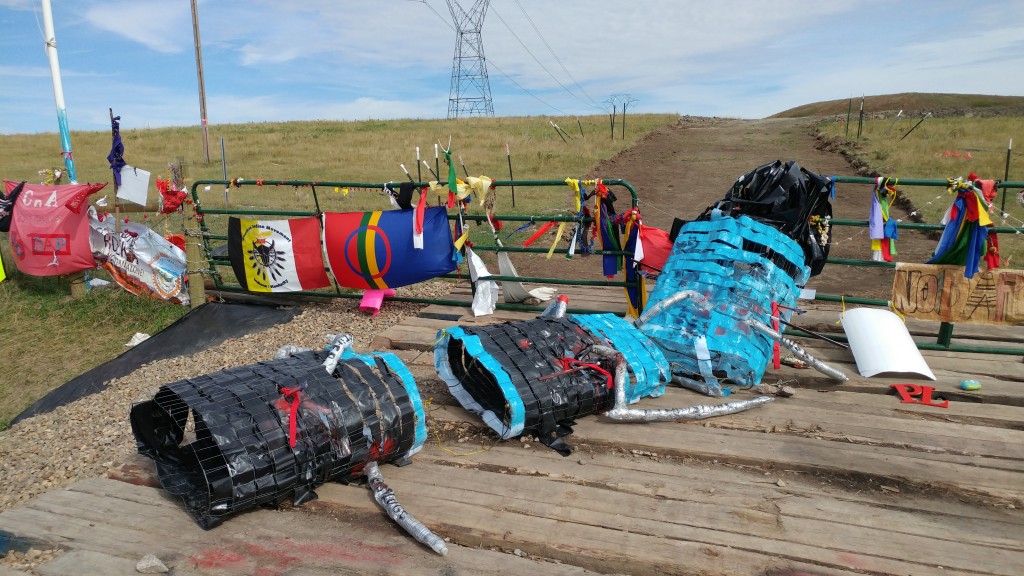
What was your first impression when you arrived at Standing Rock?
I arrived at the camp in the middle of the night. As I mentioned, my background is as a land steward and in the dark I could see the silhouettes of tipi, tents, and the trees! Or in the case of high winds I’d call that a wind break. So I knew that would be prime real estate and probably attracted some early arrivers.
I had been alone in the car for three and a half days. When I got there I pulled up and I could see a camp and a fire pit going, so I pulled out my head lamp, opened my car, and started rummaging around trying to figure out how I’m going to set up my camp.
Before I’d even finished unpacking my things, I was greeted by two large native guys and a woman from South Dakota. They were curious where I was from and why I had come. I shared that I was a builder and came to help however I could, but it was only when I shared I could cook that I was gifted with a “Hey, you said the magic word! Come with us, let’s introduce you to the family.” As it turns out this camp served as one of the kitchens providing food for the security, which was really beautiful witnessing the inner workings and communication of those who are literally guarding our camp. The security at Standing Rock was to hold a strong perimeter of the main camp and it was not uncommon for they remove someone from camp whom had been intoxicated, disrespectful, or broken a rule.
What were some of the tribes and the countries you met people from while you were there?
While at Oceti Sakowin, I met people from Canada, New Zealand, Mexico, Germany, and dozens more. The majority were Native Tribes, people of those regions and many non-native travelers. My most fond connection with tribal communities however, came when my five-year-old son arrived at camp and participated in the home school program. His day started out like many schools do, with the kids playing outside. Then the teachers would gather the children together and they’d enter a tipi. Everyday, an elder or story-teller would arrive to share story with the children. They were gifted with stories about waters, the earth, the plants, the tribes, and constellations, basically experiencing the oral tradition that is so vital to so many cultures. Afterward, the children would go outside to have some exercise time. One morning, the Māori arrived at the school and were teaching the kids the Māori haka, engaging their bodies in song and dance. Other days he was learning the Lakota language, or Cherokee beadwork, or Apache and Dineh herbalism. He also had time to work on his arithmetic and natural sciences. But seeing how so many water protectors were committed to passing their heritage on to the next generation really warmed my heart and made me even more appreciative of our movement.
What are the medic tents like and what kind of healers did you meet there?
Medic facilities, at least when I was there, were comprised of Army style tents. I believe since then there may be more substantial structures built. Healers included: Conventional Doctors, Chiropractors, Body Therapists, Herbalists, Veterans with medical backgrounds, and nurses. I also have heard that even more doctors have shown up since then. However there is always a need for more doctors, especially considering the surging population of people and winter setting arriving. For individuals wanting to connect and assist with medical, they should contact the Standing Rock Healer and Medic Council.
While there I was able to assist a collective of brilliant Native youth. They were working on developing sustainable design projects. It was gratifying to be valued for my expertise, but really I was in awe of how much knowledge they had to offer. Their designs not only included sustainable practices but also integrated ancestral wisdom and artistic flair. To be quite honest, and I say this as a permaculture practitioner, there is some serious earth wisdom amongst our Native youth. While I was there I was able to assist these kids in designing a sustainable city. Their vision was to form a circular city surrounding a sacred fire. They incorporated Earth Lodges in the four directions, sweat lodge, tipi, agriculture systems with water capture, and the incorporation of solar and wind generators. The last day I was there we were invited to sit in council chambers with a crew of respected elders, council members, contractors, and engineers, and us. After calling in the directions and properly introducing ourselves, we were asked to share our design. The design was passed around the table and met with some side glances. Then, when it arrived in the hands of Tom Goldtooth, he smiled and invited us to see their design. We placed the two designs on the table and they were identical!
There were times when we would be making prayer pilgrimage and along side us flying in the sky were two eagles. Our winged brothers and sisters. There was an ever lasting knowledge that they too were holding our vision of water protection.
There were times when we’d be in prayer at the main camp and we’d be honoring the power of the elements, and at that moment a massive twenty foot dust devil (Brother Wind) erupts out of the central fire and then goes down the hill and hovers between six tipis.
Also, when Non-natives refer to ancestors often they are describing family members who died and lived a long time ago. This is not quite the case for many Natives. Ancestors are actually in an adjoining dimension, and it is not uncommon for one’s ancestors to arrive during ceremony- quite literally. I can see and am in deep reverence of how the ancestors of these people have informed and inspired such a beautiful way to challenge DAPL. It is for this reason that I also have a deep respect for the Elder Council. They, in alignment with the ancestors, truly hold the overarching prayer and vision for Oceti Sakowin. When things start to sway off course, it is my prayer that we listen more deeply to the Elders.
Standing at the main center fire, the prayer fire, at lunch time, all of a sudden the entire encampment starts to whoop, sounding like a pack of wolves or coyotes. It’s jarring and a bit frightening if you’ve never heard it before. I run out to the main road where the flags of over 500 sovereign nations are and I see these native cross country runners entering the camp. They had run from the South West all the way to North Dakota, literally Cross-Country Runners.
Which leads me to another question: how may we arrive and show our solidarity? The most simple way for us is to be humble, be in service, ask sincere questions, be the student, and simply support them.
How is the camp preparing for winter?
Everyday the camps are becoming more and more organized. There are a number of winterization projects underway. The Seven Council Fires is focused on seeing that proper winter housing is available. I’m aware of strawbale homes, earthen domes, mandans, insulated tipis, yurts, solar panels, wind turbines, biodiesel generators, and more. Regardless of where the council chooses to spend them, know that our financial contributions go a long way.
Please direct your donations to http://www.ocetisakowincamp.or
While there are a number of camps available to receive your contributions, I feel it is important to point out that Oceti Sakowin is both the largest camp (having the largest number of people and gathered nations) and also the least funded camp. Even with the crazy back and forth from the Army Corps of Engineers in the last week, I know Oceti Sakowin will show its dedication to prayer, resilience and sustainability and put any contributions to great effect.
What is your view of the political and the spiritual importance of what’s happening at Standing Rock?
Watching the outcome of this election, I can’t help but feel there is an awakening happening. An absolutely essential component of our society is finally finding a voice, and that voice is resonating across nations, races, and religions. People are fighting for their land, fighting for their water, fighting for peace. Environmentalists on the left, pragmatists in the middle, and conservation minded conservatives can all find hope in what is happening at Standing Rock.
The most beautiful part of this movement is that it is being led by those who traditionally have been ignored. Tribal youth and elders are able to exercise authority not experienced in hundreds of years. Many non-natives who’ve only ever experienced indigenous culture through movies, books, and video games, are seeing the rich panoply of expressions and perspectives that the hundreds of gathered peoples express. Hopefully we can build upon this poignant moment to create a lasting movement advocating and fighting for the rights of the indigenous, the rights of the land, and the rights we all have to clean water.
What was the most important thing you learned at Standing Rock?
Watching the atrocities and the use of excessive force on the protectors has been very difficult. I’m sure for some people they see a crowd of people gathered and may be like “What are those protectors up to now?” I don’t see that when I look at the footage. My memory banks open and all the small details pour out. I can see them laughing at one of my silly jokes told around a campfire. I can hear their voice early in the morning yelling “Indian coffee!” I can see us standing next to a tipi in the dead of night watching aurora borealis dance across the sky as we held each other arm in arm. I remember my aunty smiling as the whole camp raved about her most excellent fry bread. I remember having girl talk on a tree stump and laughing with my sister.
It hurts to learn that same sister was shot in the head with a canister of tear gas as she raced to evacuate stranded water protectors. But if Standing Rock taught me anything it taught me how to pray. I pray for their ancestors to give them strength and faith. I offer their ancestors spirit plates at every meal. I pray for their bodies’ capacity to heal quickly. I pray for all the animals, plants, and land that have already been devastated through the construction. I pray for the contractors and their families as well as the police officers. I pray for the water, for it is life. Mni Wiconi.
